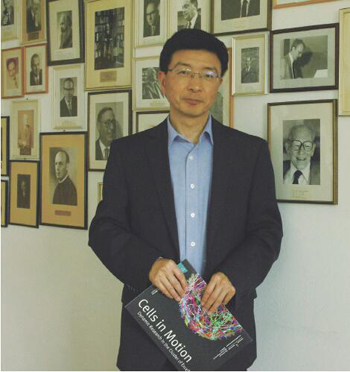报告题目:Biomedical Imaging: From Information Processing to a Galisonian Perspective
报 告 人:蒋晓毅 博士 (德国明斯特大学终身教授)
时 间:2018年5月25日上午10:00-11:30
地 点:燕山校区一号教学楼1406
主办单位:BT365的网址是多少、科研处
报告人简介:
蒋晓毅 (Xiaoyi Jiang)

https://www.uni-muenster.de/PRIA/personen/jiang.shtml
Xiaoyi Jiang studied Computer Science at Peking University and received his PhD and Venia Docendi (Habilitation) degree in Computer Science from University of Bern, Switzerland. He was an associate professor at Technical University of Berlin, Germany. Since 2002 he is a full professor of Computer Science at University of Münster, Germany, and currently the Dean of the Faculty of Mathematics and Computer Science. He is Editor-in-Chief of International Journal of Pattern Recognition and Artificial Intelligence. In addition, he also serves on the advisory board and editorial board of several journals including IEEE Transactions on Medical Imaging, International Journal of Neural Systems, and Pattern Recognition. His research interests include image analysis, pattern recognition, and machine learning. One research focus is biomedical imaging. In that area he is a Principal Investigator of the Cluster of Excellence “Cells in Motion” funded by the German Excellence Initiative. Prof. Jiang is a Fellow of IAPR (International Association for Pattern Recognition).
报告摘要:
Imaging has become an indispensable tool in biology and medicine for both basic research and clinical practice. The specific image characteristics and problems in these fields have motivated researchers to develop novel concepts and algorithms. This talk emphasizes the fundamental research view of biomedical imaging and discusses a number of related challenges, concepts, and algorithms. In addition to the traditional computer vision approaches, another focus will be given to machine learning based approaches. Besides the information processing view the imposing development in biomedical imaging also provides a driving force for life sciences from a Galisonian perspective.
